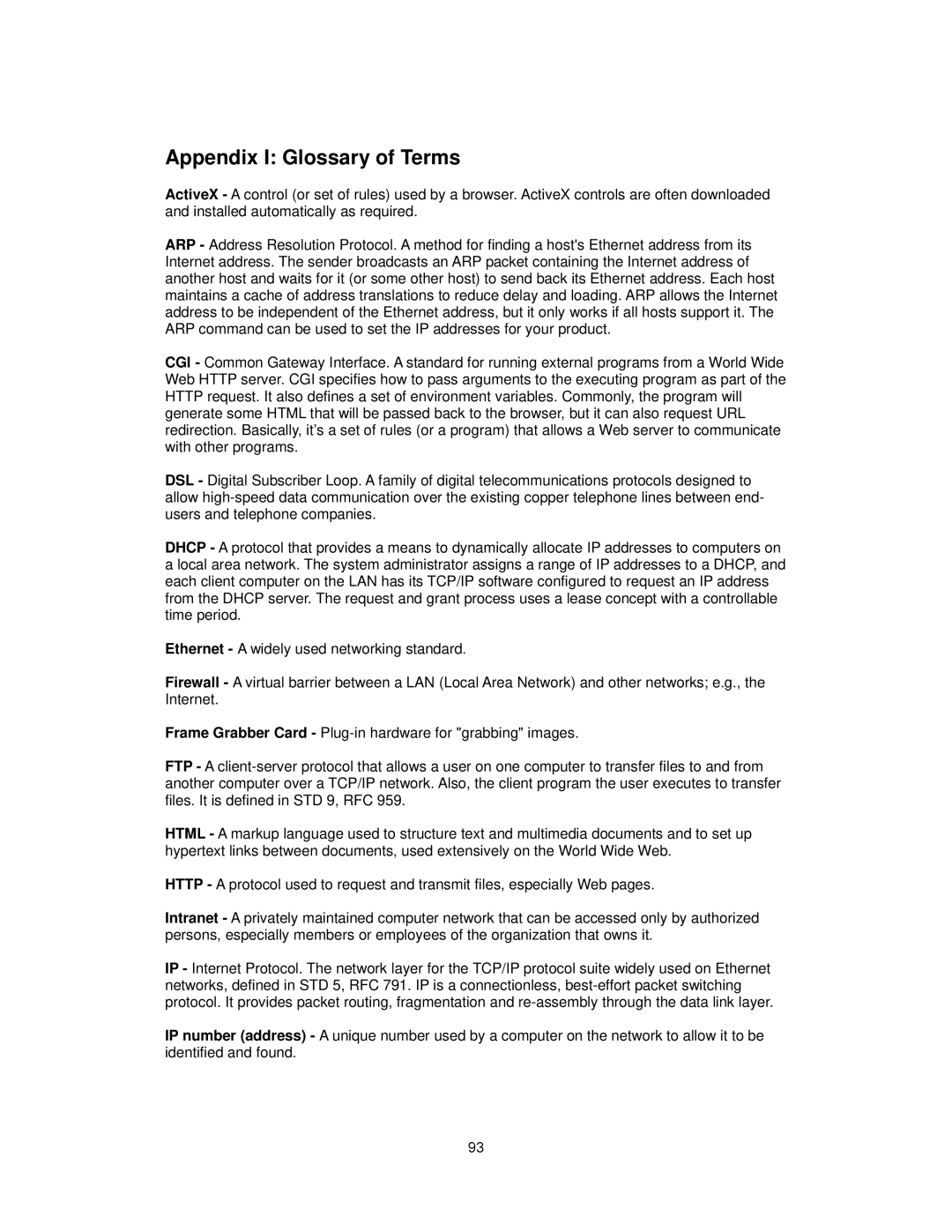Appendix I: Glossary of Terms
ActiveX - A control (or set of rules) used by a browser. ActiveX controls are often downloaded and installed automatically as required.
ARP - Address Resolution Protocol. A method for finding a host's Ethernet address from its Internet address. The sender broadcasts an ARP packet containing the Internet address of another host and waits for it (or some other host) to send back its Ethernet address. Each host maintains a cache of address translations to reduce delay and loading. ARP allows the Internet address to be independent of the Ethernet address, but it only works if all hosts support it. The ARP command can be used to set the IP addresses for your product.
CGI - Common Gateway Interface. A standard for running external programs from a World Wide Web HTTP server. CGI specifies how to pass arguments to the executing program as part of the HTTP request. It also defines a set of environment variables. Commonly, the program will generate some HTML that will be passed back to the browser, but it can also request URL redirection. Basically, it’s a set of rules (or a program) that allows a Web server to communicate with other programs.
DSL - Digital Subscriber Loop. A family of digital telecommunications protocols designed to allow
DHCP - A protocol that provides a means to dynamically allocate IP addresses to computers on a local area network. The system administrator assigns a range of IP addresses to a DHCP, and each client computer on the LAN has its TCP/IP software configured to request an IP address from the DHCP server. The request and grant process uses a lease concept with a controllable time period.
Ethernet - A widely used networking standard.
Firewall - A virtual barrier between a LAN (Local Area Network) and other networks; e.g., the Internet.
Frame Grabber Card -
FTP - A
HTML - A markup language used to structure text and multimedia documents and to set up hypertext links between documents, used extensively on the World Wide Web.
HTTP - A protocol used to request and transmit files, especially Web pages.
Intranet - A privately maintained computer network that can be accessed only by authorized persons, especially members or employees of the organization that owns it.
IP - Internet Protocol. The network layer for the TCP/IP protocol suite widely used on Ethernet networks, defined in STD 5, RFC 791. IP is a connectionless,
IP number (address) - A unique number used by a computer on the network to allow it to be identified and found.
93
